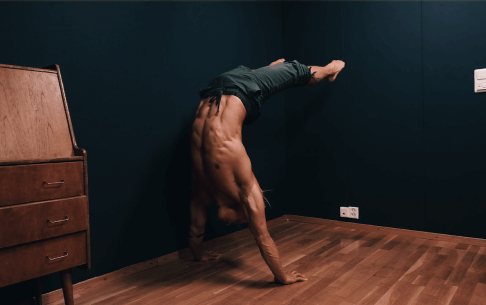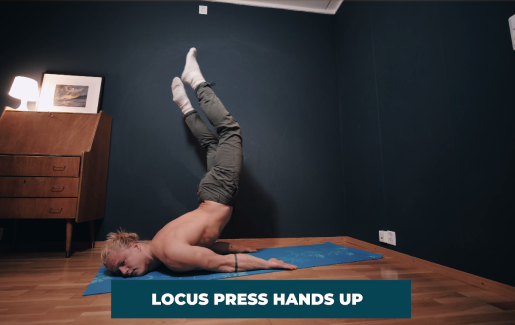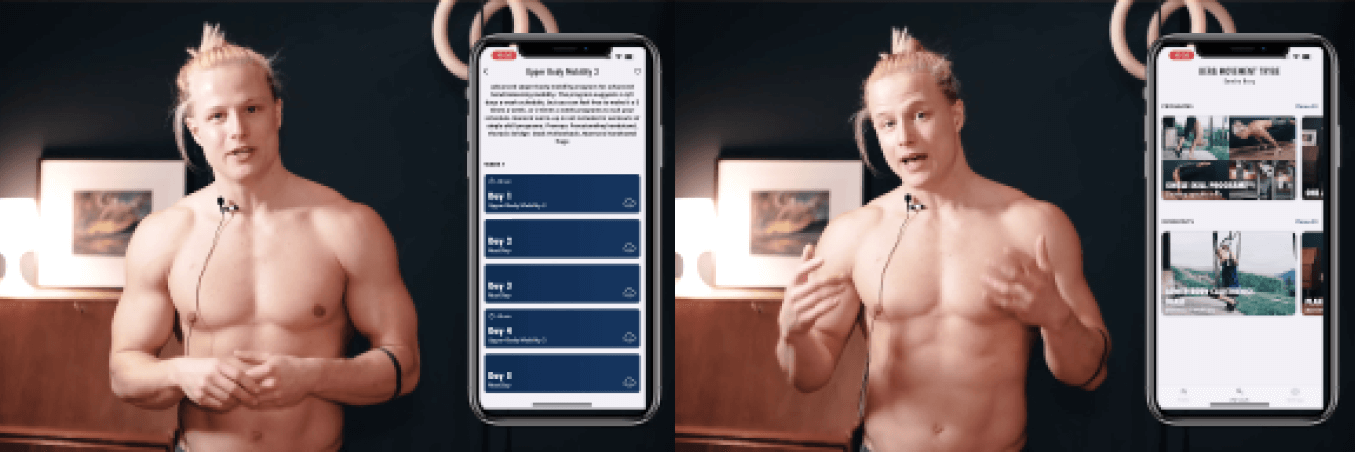The Weird Yoga Calisthenics Move That Went Viral - Inverted Locust Press to Hollow Back
A few months ago, I posted this to instagram and it quickly went viral. The move is one that I had seen years before in a South Korean film, and one which I thought was awesome at the time. Two things I didn’t know: 1. the actor in the movie wasn’t actually doing the moves under his own power. 2. I would be doing the move myself a few years later.
Check out the full YouTube video on the story behind my inverted locust press/press to chest stand.
Lots of things happened between seeing that move in the film years ago, to doing it myself. It involves seeing that film, randomness, and years of preparation for being able to perform a move that I didn’t even know I was preparing for. In this piece I will answer some questions you might have about this move:
wtf is it actually called?
how can I train for this move myself?
did you actually do that move, or did you film yourself doing an easier move, and then put it in reverse?
Here’s the move that went viral
What is this move actually called?
After a follower, @Francesco_piceni helped me out and reminded me of the name of the film for which I had forgotten - Oldboy - I was able to look up the film and subsequently, the name of the move.
It turns out this is actually a yoga pose, and its name is… *drumroll*... the Inverted Locust Pose, also known as Viparita Shalabhasana. It is an advanced Ashtanga Yoga Pose, and there are many out there who have been rocking this pose for awhile now. As it turns out, this is also a move used by contortionists, as you can see demonstrated here by @contorelle. In that realm, it’s known as the Chest Stand, or the Chin Stand.
Here @contorelle is performing the inverted locust press, called the chest stand or chin stand in the contortionist realm.
So, parts of this weird skill have turned out to be legitimate movements.
From my understanding though, it is not too common to press into the Inverted Locust Press, rather than kick up or use some kind of momentum. Being able to hold an inverted locust pose, or a chest stand, requires a lot of upper back mobility, as well as neck mobility.
In my case, I have trained a lot of spine mobility over the years, with exercises such as the thoracic bridge. It is necessary to have significant spine mobility to be able to do back bends and hollow backs, movements which regularly find their way into my strength flows.
But I haven’t ever focused on neck mobility, which is why you will see me looking to the side when I perform this movement. Compared to contortionists and yogis like @contorelle and @danielrama_ my back bending game isn’t exactly up to scratch.
An example of someone who has trained towards an extremely bendy back .
My training for the hollow back has, however, given me enough spine mobility in order to be able to hold the inverted locust position.
The hollow back
Holding the position is one thing, but actually getting there in the first place is another. For the inverted locust pose portion of this move, you either need
Very strong straight-arm pressing power
A bendy back
A mixture of both
The way that it works for this move is that, the stronger straight-arm pressing power you have, the less bendy your back can be. On the other hand, if your back is super bendy, you don’t need as much straight-arm pressing strength.
The hollow back helped me in training a bendier back, and the planche helped a lot in my straight-arm pushing power - two important parts of the inverted locust press.
Lots of planche training over the years has given me a lot of straight-arm pressing power, which helped a lot in being able to perform this move. In fact, one great exercise for training the planche is called the assisted maltese press, and an assisted maltese press is actually what an inverted locust press would look like, if you could not bend your back at all.
The assisted maltese press is what the inverted locust press would look like, if your back couldn’t bend at all.
In terms of the order of moves for the entire skill: between the inverted locust press and the hollow back is a deep handstand push up. The strength building exercise which was most helpful in my case for being able to do the deep handstand push up portion of the skill is 90 degree push ups.
So, the memory of the movie scene that I was totally mesmerized by, in combination with planche and hollow back training, somehow became this specific skill. The name I’ve come up for it is, The Inverted Locust Press to Hollow Back, but I imagine you all can probably come up with something a lot better. Zombie Push Up?... The Old Boy Press? Let me know what you think it should be called in the comments :).
Training progressions for inverted locust press to hollow back:
Once I noticed that I could even do the inverted locust press, the name for which I didn’t even actually know at the time, I started training for it.
The progression below is for specifically improving the inverted locust press portion of the skill.
To start, I lay on my stomach and put my hands underneath me, with my palms facing up. Using momentum I swung my legs up into the inverted locust press. Sometimes, I would kick up into the position.
After that, I placed my hands a little wider, on either side of my thighs, still with my palms facing up, and using less momentum.
When I got comfortable with that, I switched my palms to facing downwards. This way, I was able to more smoothly transition into a handstand-push-up-looking move.
Having my palms facing downwards is what allowed me to enter the HSPU and thus use the movement in combinations and sequences, and I hope to see some cool sequences from you guys using this weird move now too!
Summary of how I learned the press to inverted locust pose/chest stand
Spine mobility
the hollow back helped me in getting a bendier back while also learning the hollow back, which is one of the coolest hand balancing skills out there.
Straight arm strength
The planche and assisted maltese press helped in my straight arm pushing power while at the same time learning the planche, which is also a pretty cool skill.
Focused and specific skill training
Focused training on the inverted locust press later on, is what brought this skill together for me. This includedØ
Using a close, pronated grip
Using momentum to get up
gradually using less momentum, wider grip and eventually turning hands to supinated (palms down)
90 degree push-up for the continuation of the move
I hope you found the backstory on this move helpful and informational, and that it may help guide you to being able to do the inverted locust press to hollow back too! A weird, fun and awesome move. :)
For those who are interested, I’m now pushing out weekly youtube content and tutorials. If you happen to check any of the tutorials out and find them helpful, check back every week for more content. A like, comment, and ‘subscribe’ is very very much appreciated as I’m sure you’ve heard from myself and many others before.
Aside from the youtube content, please feel free to check out my app! There you will find programs with a full workout schedule designed for you for each day of the week - all you need to do is follow along.
Much love and see you all soon!











